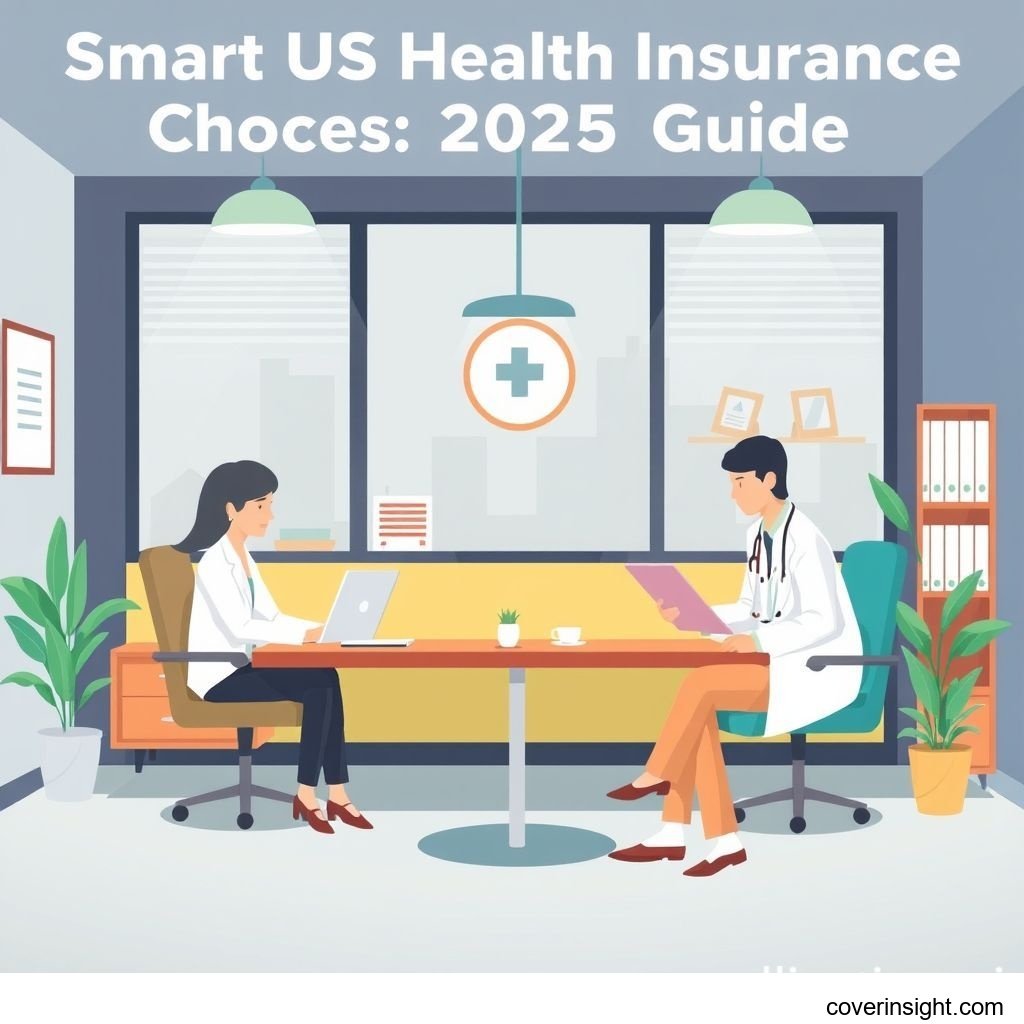Introduction
Navigating the labyrinthine world of medical insurance in the US for 2025 can feel like a daunting task, but securing the right coverage is absolutely essential. More than just a bureaucratic requirement, comprehensive health insurance acts as a critical safety net, protecting individuals and families from the often-staggering costs of unexpected illnesses, accidents, and even routine medical care. In a healthcare landscape where a single emergency room visit can run into thousands of dollars, having a smart health insurance plan isn't just about compliance; it's about safeguarding your financial future and ensuring access to the care you need, when you need it.
Coverage Details
Understanding what your health insurance plan covers—and what it doesn't—is paramount to making an informed decision.
What’s Included
Most smart health insurance plans in the US typically include a robust set of "essential health benefits" as mandated by the Affordable Care Act (ACA). These broadly cover:
-
Ambulatory Patient Services: Outpatient care you get without being admitted to a hospital.
-
Emergency Services: Care for life-threatening conditions.
-
Hospitalization: Inpatient care for surgery, acute conditions, etc.
-
Maternity and Newborn Care: Care before and after birth, for both mother and baby.
-
Mental Health and Substance Use Disorder Services: Including behavioral health treatment.
-
Prescription Drugs: Often tiered, covering generic, preferred brand, and non-preferred brand medications.
-
Rehabilitative and Habilitative Services and Devices: Helping people recover from or gain mental and physical skills.
-
Laboratory Services: Blood tests, screenings, etc.
-
Preventive and Wellness Services and Chronic Disease Management: Crucial for early detection and managing ongoing conditions, often covered at 100%. This includes screenings, immunizations, and counseling.
-
Pediatric Services: Including oral and vision care for children.
Common Exclusions
While plans cover a lot, there are common exclusions to be aware of:
-
Cosmetic Procedures: Surgeries or treatments purely for aesthetic enhancement.
-
Experimental/Investigational Treatments: Unless proven effective and medically necessary.
-
Off-Label Drug Use: Prescribing medications for conditions not approved by the FDA, though exceptions can exist.
-
Weight Loss Programs/Bariatric Surgery: Often excluded unless medically necessary and meeting strict criteria.
-
Long-Term Care: Nursing home care, assisted living, and home health aides for chronic conditions are typically not covered by standard health insurance.
-
Travel Outside the US: Most domestic plans offer limited or no coverage abroad.
-
Non-Medical Services: Such as private duty nursing, hotel stays, or transportation.
Always review the Summary of Benefits and Coverage (SBC) for any plan you're considering to get the definitive list of what’s in and what’s out.
Cost Analysis
The cost of medical insurance can vary wildly, but understanding the underlying factors and knowing where to look for savings can make a real difference.
Price Factors
Several elements play a role in determining your health insurance premiums:
-
Age: Generally, older individuals pay higher premiums.
-
Location: Premiums differ significantly by state, and even by county, due to local healthcare costs and competition among insurers. For instance, according to data from the Centers for Medicare & Medicaid Services, average premium costs can vary by hundreds of dollars depending on the specific rating area within a state.
-
Plan Type:
-
HMO (Health Maintenance Organization): Typically lower premiums but require a primary care physician (PCP) referral for specialists.
-
PPO (Preferred Provider Organization): More flexibility in choosing providers without a referral, but often higher premiums.
-
EPO (Exclusive Provider Organization): Similar to PPOs but restrict coverage to a specific network.
-
POS (Point of Service): A hybrid, offering some out-of-network coverage with referrals.
-
HDHP (High-Deductible Health Plan): Lower monthly premiums but higher deductibles, often paired with a Health Savings Account (HSA).
-
-
Tobacco Use: Smokers can face significantly higher premiums.
-
Metal Tier (on the ACA Marketplace):
-
Bronze: Lowest premiums, highest deductibles (covers 60% of costs).
-
Silver: Moderate premiums, moderate deductibles (covers 70% of costs). Offers cost-sharing reductions for eligible incomes.
-
Gold: High premiums, low deductibles (covers 80% of costs).
-
Platinum: Highest premiums, lowest deductibles (covers 90% of costs).
-
Saving Tips
Saving on health insurance isn't about cutting corners on vital care, but rather making informed, strategic choices.
-
Explore Subsidies: The ACA Marketplace (Healthcare.gov) offers premium tax credits and cost-sharing reductions based on household income. Many Americans qualify, even those with moderate incomes. Don't assume you earn too much to qualify; check your eligibility on Healthcare.gov.
-
Consider High-Deductible Plans with HSAs: If you're generally healthy, an HDHP with an HSA can be a smart move. The lower premiums save you money monthly, and the HSA allows you to save and invest pre-tax dollars for future medical expenses. It’s like having a dedicated savings account that grows tax-free for healthcare.
-
Employer-Sponsored Plans: If available, employer plans often offer the best value as employers typically cover a significant portion of the premium.
-
Compare Plans Annually: Health insurance plans and your needs change. What was a good fit last year might not be for 2025. Use the open enrollment period to compare new plans and benefits. Websites like National Association of Insurance Commissioners and your State Insurance Departments can provide valuable resources for comparison.
-
Utilize Preventive Care: Most plans cover preventive services at 100%. Regular check-ups and screenings can catch issues early, preventing costly complications down the line. It's truly a penny saved, a dollar earned approach.
-
Understand Your Network: Staying within your plan's network of doctors and hospitals is crucial for avoiding unexpected out-of-network costs, which can be a real bank breaker. Always confirm your providers are in-network before receiving care.
FAQs
-
How much does medical insurance cost?
The cost varies widely, typically ranging from a few hundred dollars to over a thousand dollars per month for individual plans, depending on age, location, plan type, and whether you qualify for subsidies. Family plans are significantly more. For example, a 30-year-old living in a moderately-priced area might pay around $400-$600/month for a Silver plan before subsidies.
-
What affects premiums?
Age, geographic location (state/county), plan type (HMO, PPO, HDHP), tobacco use, and the level of coverage (Bronze, Silver, Gold, Platinum) all significantly affect your monthly premium. Income can also affect your net premium if you qualify for subsidies.
-
Is it mandatory?
While the federal individual mandate to have health insurance was repealed in 2019, meaning there's no federal penalty for not having coverage, some states (like Massachusetts, New Jersey, and California) still have their own individual mandates with associated penalties. Beyond legal requirements, having coverage is practically essential to avoid massive medical debt.
-
How to choose?
Assess your healthcare needs (e.g., do you have chronic conditions, or do you rarely visit the doctor?), your budget for premiums and out-of-pocket costs, and preferred doctor networks. Consider the deductible, co-pays, and co-insurance. For more general advice, you can check out Insurance Resources Global.
-
Consequences of no coverage?
The consequences of no health insurance in the US can be dire. Without coverage, you are personally responsible for 100% of your medical bills. A serious accident or illness can lead to tens or hundreds of thousands of dollars in debt, potentially leading to bankruptcy. Furthermore, access to routine care often becomes limited, leading to neglected health issues that worsen over time. It's often a case of "pay now or pay later, and usually pay a lot more later." To learn more about navigating the US insurance landscape, visit US Insurance Home. Consider the real-world example of Michael, a healthy 45-year-old in Texas who opted out of coverage to save money. An unexpected heart attack left him with over $150,000 in hospital bills, plunging him into bankruptcy – a stark reminder that even the healthiest among us can face sudden, catastrophic medical events.
Author Insight & Experience
As someone living in the US and having navigated its complex healthcare system for years, I can tell you that picking the right health insurance plan isn't merely a financial transaction; it's about gaining peace of mind. Based on my experience, the biggest mistake people make is choosing a plan solely based on the lowest premium without understanding the true out-of-pocket costs, like deductibles and co-insurance, or checking if their preferred doctors are in-network. Doing your homework and leveraging resources like the ACA Marketplace or your employer's HR department can save you a bundle and protect you from unforeseen medical emergencies. It's truly an investment in your well-being.








Comments